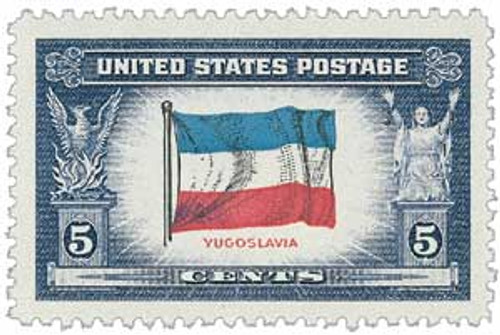
# 913 - 1943 Overrun Countries: 5c Flag of Netherlands
5¢ Flag of Netherlands
Overrun Countries Series
City: Washington, D.C.
Quantity: 19,999,646
Printed by: American Bank Note Company
Printing Method: Flat-Plate
Perforations: 12
Color: Blue violet, dark rose, blue, and black
US-Netherlands Relations
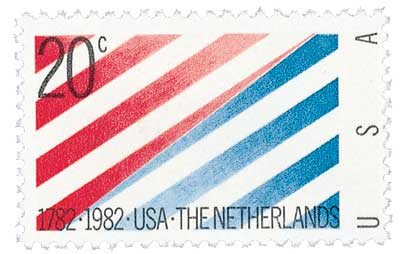
On April 19, 1782, John Adams secured recognition from the Dutch Republic of the United States as an independent government. This marked the start of one of America’s longest unbroken peaceful relationships with another nation.
The link between the Netherlands and America began more than a century earlier. In the late 1500s, the Dutch were among several Europeans to colonize the eastern coast of North America.
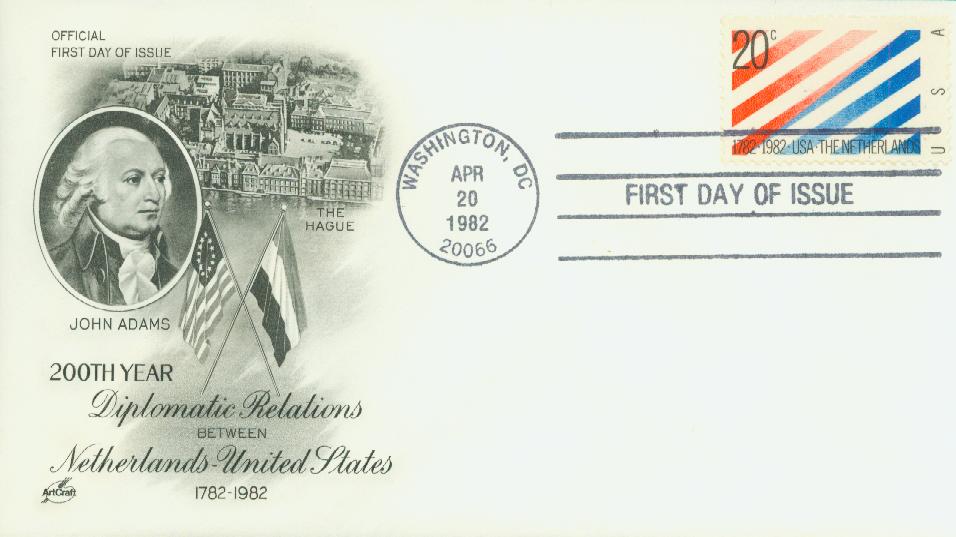
These early Dutch settlements comprised the territory of New Netherland, which became a colony of the Dutch Republic in 1624. The Dutch also established New Amsterdam, which later became New York City. And today, the flag of New York City is based on that of the Republic of the United Netherlands.
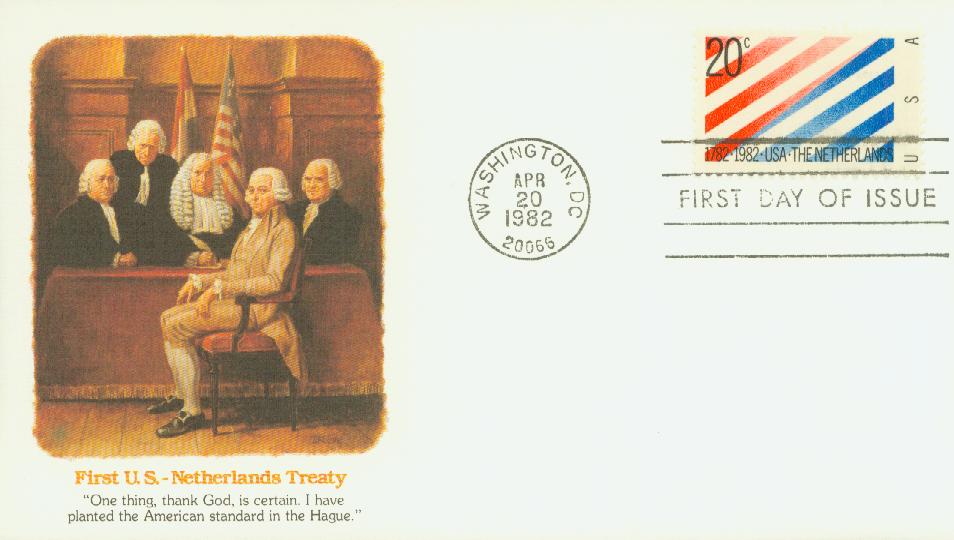
On November 16, 1776, the Dutch fort at St. Eustatius fired its guns nine times as a ship flying the US flag sailed into the harbor. This was the first time another country gave America a formal salute, in effect recognizing the nation’s independence.
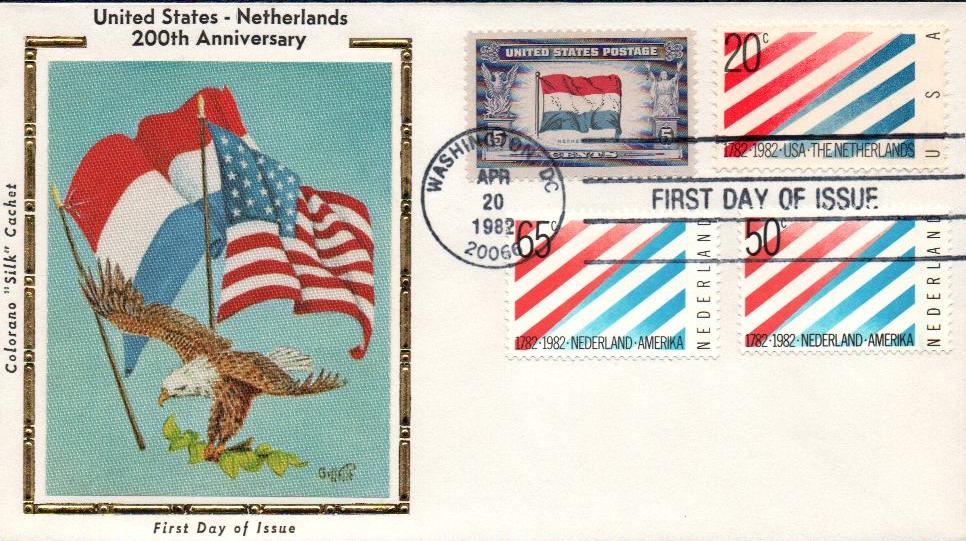
In July 1780, John Adams was made ambassador to the Dutch Republic. In this role, he traveled to the Netherlands and on April 19, 1782, was received by the States General in The Hague and recognized as Minister Plenipotentiary of the United States. This secured Dutch recognition of the United States as an independent government. The Netherlands was the second foreign country to recognize the US, after France, which had done so in 1778.
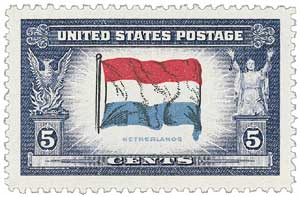
While in the Netherlands, Adams purchased a home in The Hague, which became the first American embassy in the world. Also during that trip, he negotiated a loan of five million guilders with two wealthy Dutch businessmen. By 1794, the Dutch would grant the US a total of 11 loans worth 29 million guilders. On September 6, 1782, Adams negotiated the Dutch-American Treaty of Amity and Commerce, the second such treaty with a foreign nation, again after France.
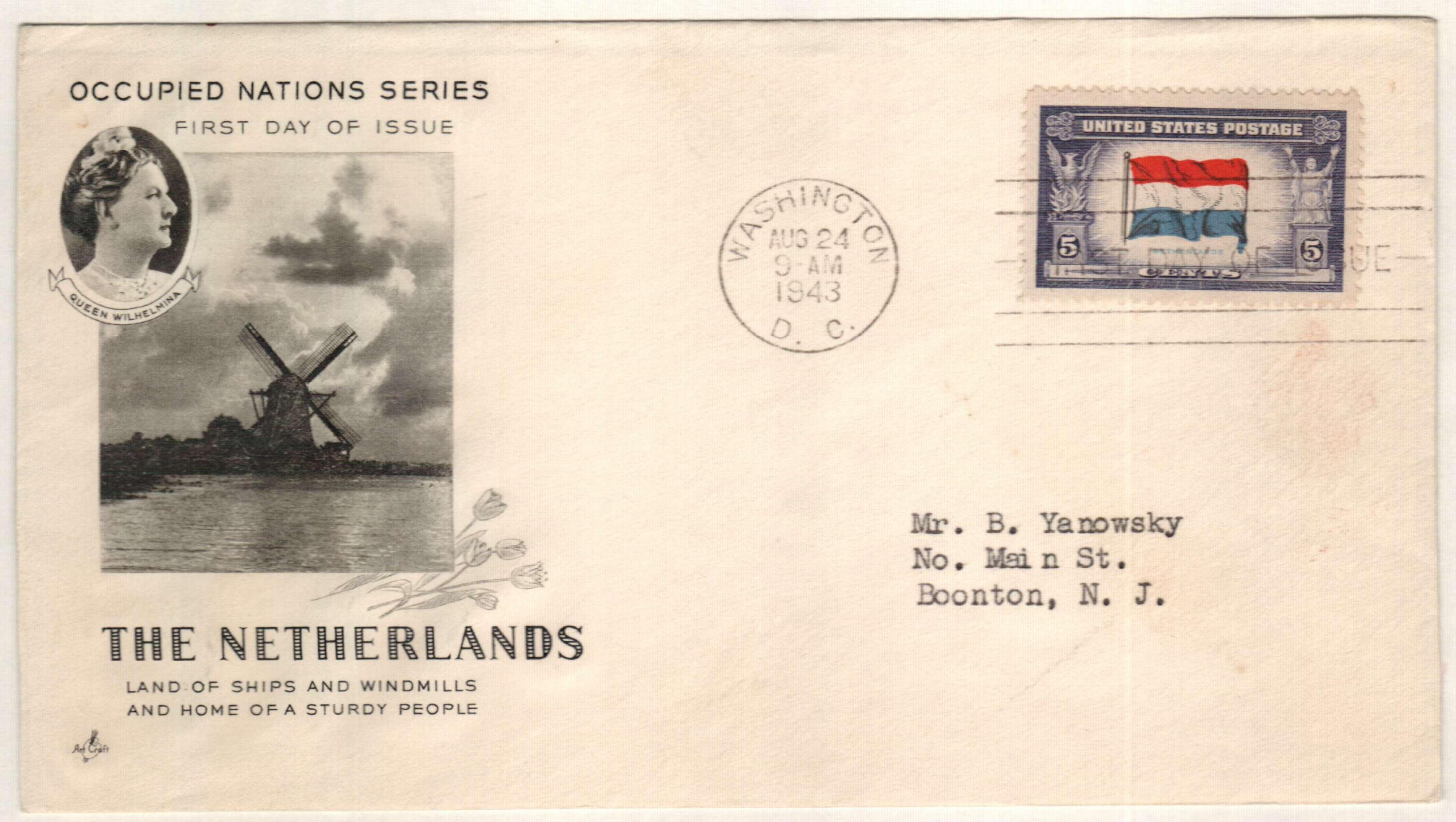
To mark the 200th anniversary of Adams’ first meeting with the Dutch, President Ronald Reagan declared April 19, 1982, to be Dutch-American Friendship Day, which is still celebrated today.
Click here for stamps from the Netherlands.
Click here to read the text of the Dutch-American Treaty of Amity and Commerce and here for more about modern US-Netherlands relations.
5¢ Flag of Netherlands
Overrun Countries Series
City: Washington, D.C.
Quantity: 19,999,646
Printed by: American Bank Note Company
Printing Method: Flat-Plate
Perforations: 12
Color: Blue violet, dark rose, blue, and black
US-Netherlands Relations

On April 19, 1782, John Adams secured recognition from the Dutch Republic of the United States as an independent government. This marked the start of one of America’s longest unbroken peaceful relationships with another nation.
The link between the Netherlands and America began more than a century earlier. In the late 1500s, the Dutch were among several Europeans to colonize the eastern coast of North America.

These early Dutch settlements comprised the territory of New Netherland, which became a colony of the Dutch Republic in 1624. The Dutch also established New Amsterdam, which later became New York City. And today, the flag of New York City is based on that of the Republic of the United Netherlands.

On November 16, 1776, the Dutch fort at St. Eustatius fired its guns nine times as a ship flying the US flag sailed into the harbor. This was the first time another country gave America a formal salute, in effect recognizing the nation’s independence.

In July 1780, John Adams was made ambassador to the Dutch Republic. In this role, he traveled to the Netherlands and on April 19, 1782, was received by the States General in The Hague and recognized as Minister Plenipotentiary of the United States. This secured Dutch recognition of the United States as an independent government. The Netherlands was the second foreign country to recognize the US, after France, which had done so in 1778.

While in the Netherlands, Adams purchased a home in The Hague, which became the first American embassy in the world. Also during that trip, he negotiated a loan of five million guilders with two wealthy Dutch businessmen. By 1794, the Dutch would grant the US a total of 11 loans worth 29 million guilders. On September 6, 1782, Adams negotiated the Dutch-American Treaty of Amity and Commerce, the second such treaty with a foreign nation, again after France.

To mark the 200th anniversary of Adams’ first meeting with the Dutch, President Ronald Reagan declared April 19, 1982, to be Dutch-American Friendship Day, which is still celebrated today.
Click here for stamps from the Netherlands.
Click here to read the text of the Dutch-American Treaty of Amity and Commerce and here for more about modern US-Netherlands relations.














